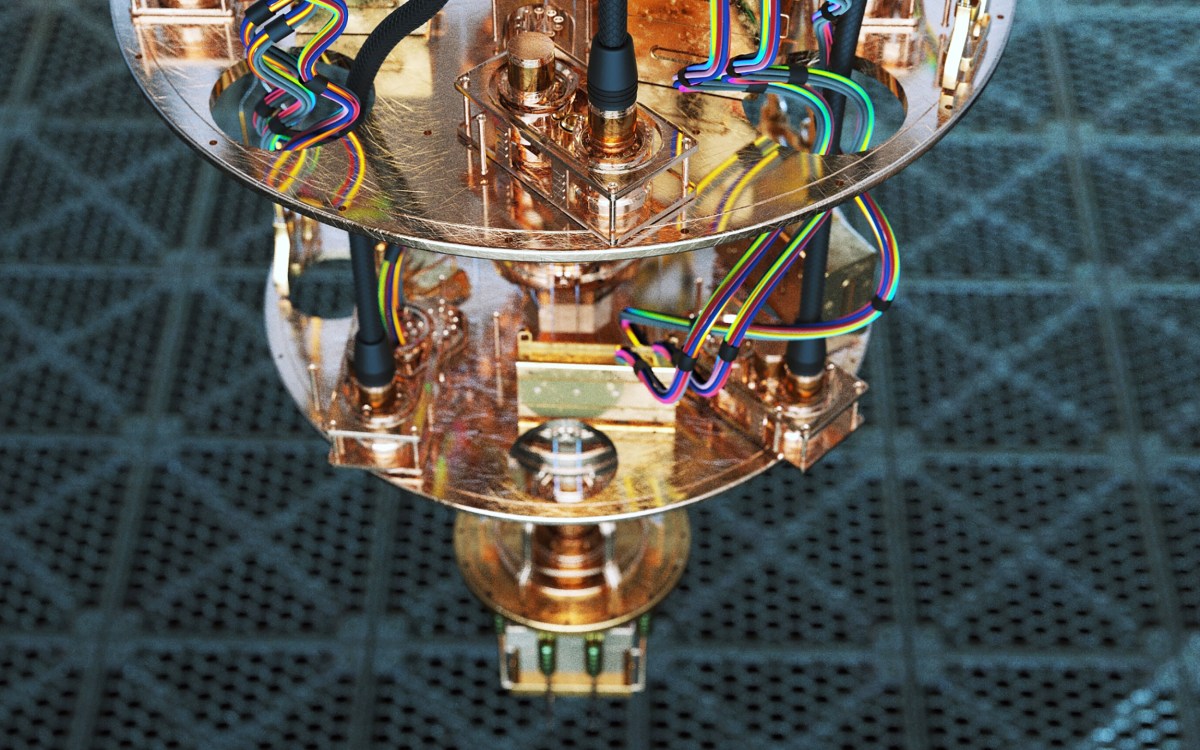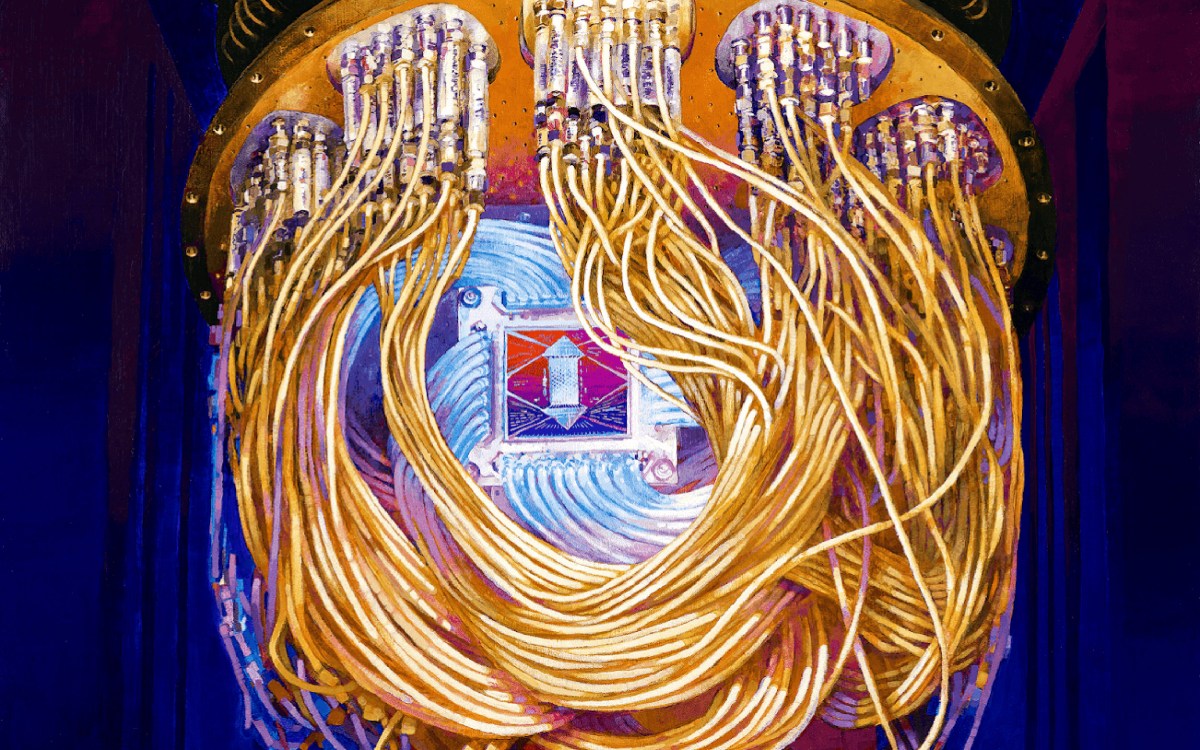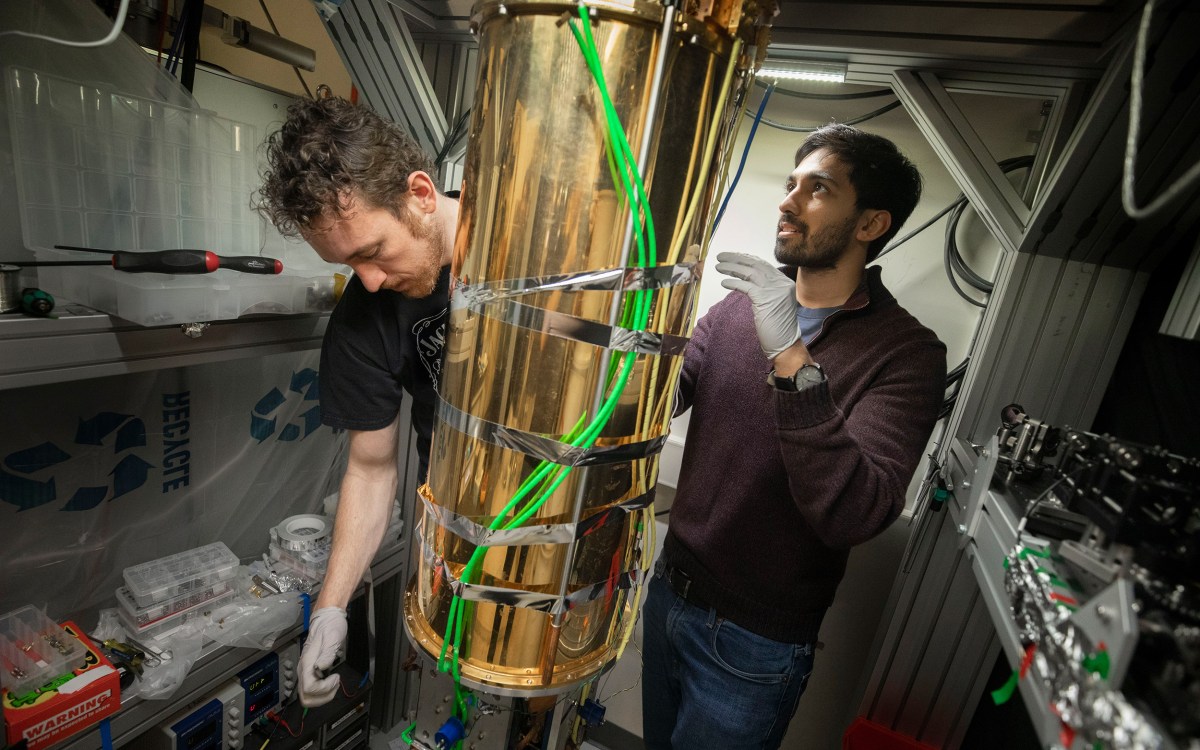Launch of pioneering Ph.D. program bolsters Harvard’s leadership in quantum science and engineering
Field expected to usher in era of super-fast computing and innovation across a range of fields
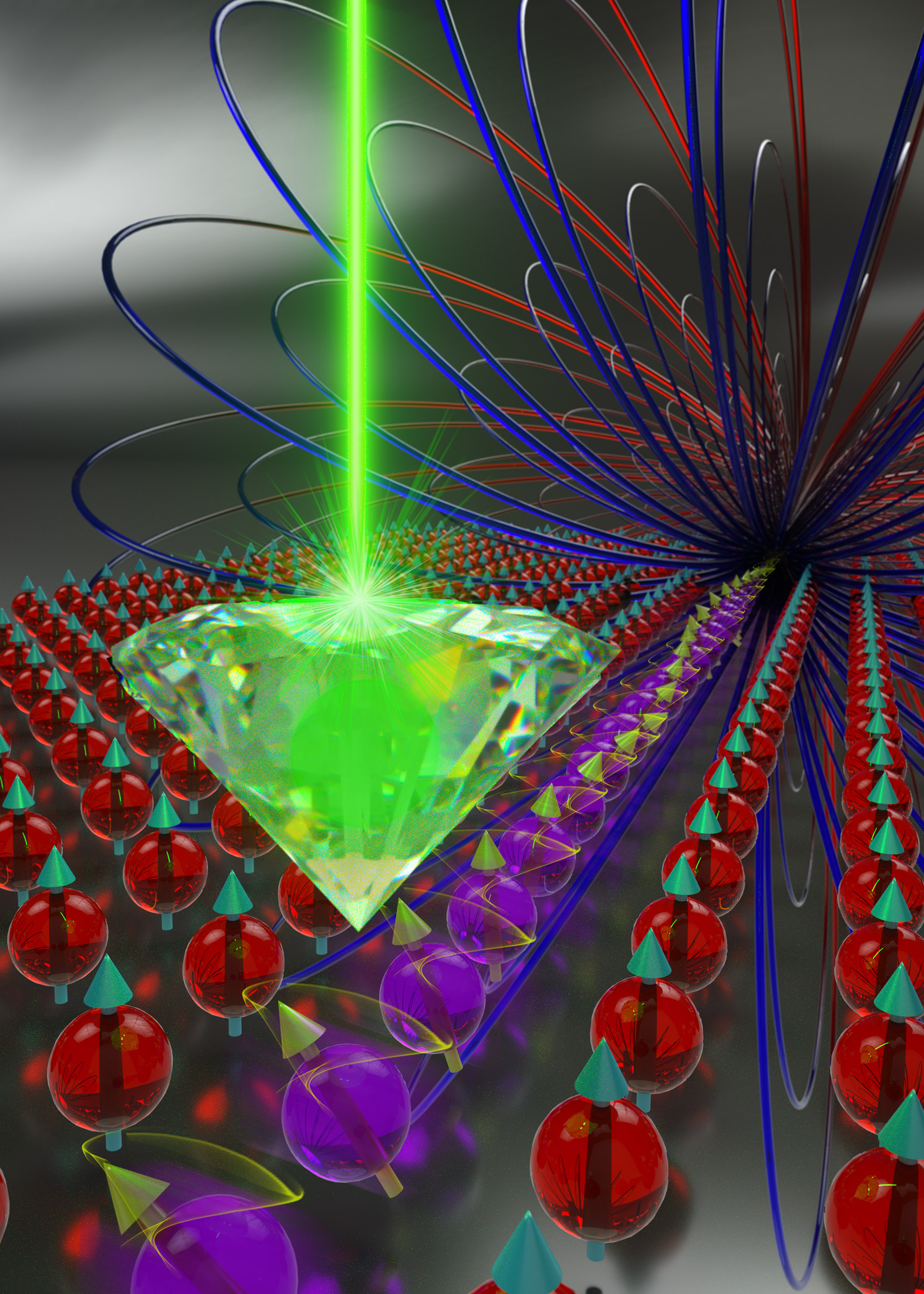
Researchers used atomic-size defects in diamonds to detect and measure magnetic fields generated by spin waves.
Images courtesy of Second Bay Studios/Harvard SEAS
In the middle of the 20th century, mathematicians, physicists, and engineers at Harvard began work that would lay the foundations for a new field of study, the applications of which would change the world in ways unimaginable at the time. These pioneering computer scientists helped develop the theory and technology that would usher in the digital age.
Harvard is once again taking a leading role in a scientific and technological revolution — this time in the field of quantum science and engineering. Today, the University launched one of the world’s first Ph.D. programs in the subject, providing the foundational education for the next generation of innovators and leaders who will transform quantum science and engineering into next-level systems, devices, and applications.
The new degree is the latest step in the University’s commitment to moving forward as both a leader in research and an innovator in teaching in the field of quantum science and engineering. Harvard launched the Harvard Quantum Initiative in 2018 to foster and grow this new scientific community. And additional future plans call for the creation of a quantum hub on campus to help further integrate efforts and encourage collaboration.
“This is a pivotal time for quantum science and engineering at Harvard,” said President Larry Bacow. “With institutional collaborators including MIT and industry partners, and the support of generous donors, we are making extraordinary progress in discovery and innovation. Our faculty and students are driving progress that will reshape our world through quantum computing, networking, cryptography, materials, and sensing, as well as emerging areas of promise that will yield advances none of us can yet imagine.”
“This cross disciplinary Ph.D. program will prepare our students to become the leaders and innovators in the emerging field of quantum science and engineering,” said Emma Dench, dean of the Graduate School of Arts and Sciences. “Harvard’s interdisciplinary strength and intellectual resources make it the perfect place for them to develop their ideas, grow as scholars, and make discoveries that will change the world.”
At the nexus of physics, chemistry, computer science, and electrical engineering, quantum science and technology promises to profoundly change the way we acquire, process, and communicate information. Imagine a computer that could sequence a person’s genome in a matter of seconds or an un-hackable communications system that could make data breaches a thing of the past. Quantum technology will usher in game-changing innovations in health care, infrastructure, security, drug development, climate-change prediction, machine learning, financial services, and more.
Researchers excited and detected spin waves in a quantum Hall ferromagnet, spending them through the insulating material like waves in a pond.
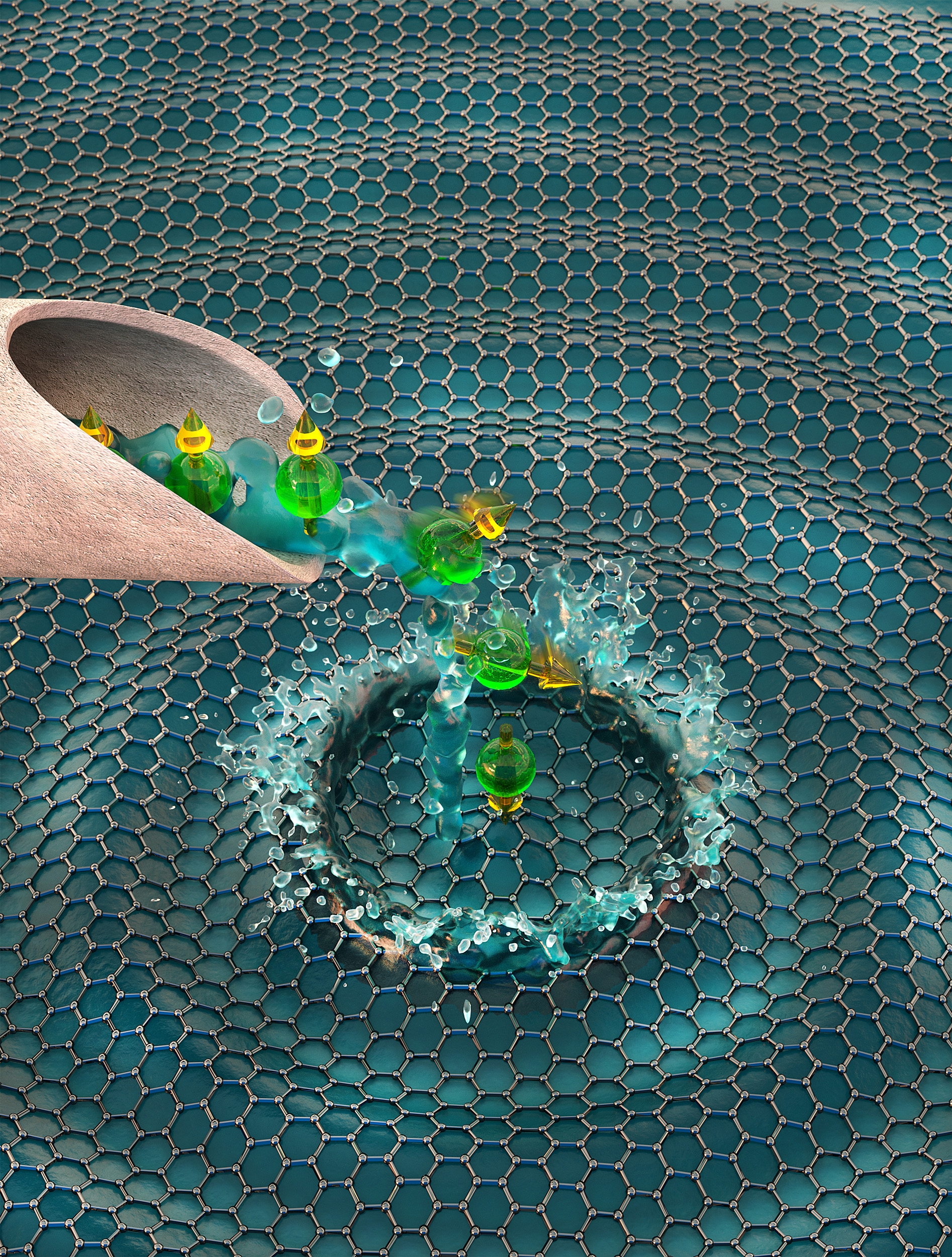
The University is building partnerships with government agencies and national laboratories to advance quantum technologies and educate the next generation of quantum scientists. Harvard researchers will play a major role in the Department of Energy’s (DOE) Quantum Information Science (QIS) Research Centers, aimed at bolstering the nation’s global competitiveness and security. As part of the centers, Harvard researchers will:
- develop and study the next generation of quantum materials that are resilient, controllable, and scalable;
- use quantum-sensing techniques to explore the exotic properties of quantum materials for applications in numerous quantum technologies;
- construct a quantum simulator out of ultra-cold molecules to attack important problems in materials development and test the performance of new types of quantum computation;
- develop topological quantum materials for manipulating, transferring, and storing information for quantum computers and sensors;
- investigate how quantum computers can meaningfully speed up answers to real-world scientific problems and create new tools to quantify this advantage and performance.
In partnership with the National Science Foundation (NSF) and the White House Office of Science and Technology Policy (OSTP), the Harvard University Center for Integrated Quantum Materials (CIQM) has helped develop curriculum and educator activities that will help K‒12 students engage with quantum information science. CIQM is also collaborating with the Learning Center for the Deaf to create quantum science terms in American Sign Language.
“Breakthrough research happens when you create the right community of scholars around the right ideas at the right time,” said Claudine Gay, the Edgerley Family Dean of the Harvard Faculty of Arts and Sciences. “The Harvard Quantum Initiative builds on Harvard’s historic strength in the core disciplines of quantum science by drawing together cross-cutting faculty talent into a community committed to thinking broadly and boldly about the many problems where quantum innovations may offer a solution. This new approach to quantum science will open the way for new partnerships to advance the field, but perhaps even more importantly, it promises to make Harvard the training ground for the next generation of breakthrough scientists who could change the way we live and work.”
“Harvard’s missions are to excel at education and research, and these are closely related,” said John Doyle, the Henry B. Silsbee Professor of Physics and co-director of HQI. “Being at — and sometimes defining — the frontier of research keeps our education vibrant and meaningful to students. We aim to teach a broad range of students to think about the physical world in this new, quantum way as this is crucial to creating a strong community of future leaders in science and engineering. Tight focus on both research and teaching in quantum will develop Harvard into the leading institution in this area and keep the country at the forefront of this critical area of knowledge.”
Quantum at Harvard: ‘A game-changing’ moment
A conversation with SEAS Dean Frank Doyle, John A. and Elizabeth S. Armstrong Professor of Engineering and Applied Sciences, and Science Division Dean Christopher Stubbs, Samuel C. Moncher Professor of Physics and of Astronomy.
transcript
Transcript:
Doyle: We’re at a game changing point in science and technology. We’re poised to enable translation breakthroughs in our applications of that understanding to broadly stated information science, so networking, signal processing, encryption, communications, computing and simulation.
Stubbs: What we’re talking about, looking to the future, exploits the really spooky parts of quantum mechanics, about the relationship of information in spatially separated systems and trying to harness that technologically and bringing it to bear on problems in networking, computing, and sensing systems.
I think we’re learning more about the way the world works every day, and we’re interested here at Harvard in knitting that understanding together across different traditionally separated fields and pulling together an integrated effort that pulls together, computer science, electrical engineering, physics systems engineering, and tries to use these to build new tools to make life better for everybody.
Doyle: Chris, I completely agree, and I would say that one thing, I recognize deeply as the dean on the engineering side is that foundations are critical to achieving success in the domain of innovation or translation, whatever the application space might be. We have to have that core body of knowledge supporting and enabling really a continuum from basic science through applied science, ultimately to engineering. I would also point to the fact that we are modestly scaled compared to some of our peers, which I think empowers us with agility and nimbleness that allows us to quickly assemble the teams that cross the spectrum of these disciplines that we need to harness, and that’s a real strength here at Harvard as well.
Stubbs: I would say we’re making significant institutional investments in this enterprise. We’ve identified a building, working in partnership across the university, that’s going to be put to use for this activity, with new labs, new teaching labs. We will fill that space with colleagues that we intend to bring to campus to strengthen our faculty in this domain. We’re building a strong and vibrant educational program. And I think an important element to include here is that we see this as a way to reach all the way into applications at scale, and we’re building partnerships with industrial partners, ranging from startups-sized companies to major national corporations that are going to have the ability to bring these ideas to bear at scale and impact people’s lives in a positive way.
Doyle: I would say that this opportunity has tremendous potential across a wide array of fields and applications, from more traditional engineering fields like communications, cybersecurity, network science, but across an even broader array of fields including finance (thinking about the new kinds of algorithms that are going to power the future of things like trading and stress testing the market); precision medicine; the quantum principles that we’re going to be able to leverage in devices that will now interrogate at unprecedented scale — spatial and temporal — to bring information back that we can act upon. So it’s virtually a limitless horizon of application opportunities out there.
Stubbs: We’re fortunate in the Boston area to have another university down the road, whose initials are MIT, with which, in particular in this technical domain, we have strong existing partnerships among the faculty. We view this as moving forward arm-in-arm with sister institutions in this region to establish Boston as one of the premier centers in the nation for both innovation, education, and application of this new technology.
Doyle: Our faculties partnering across Harvard and MIT have been doing this for literally decades. So there’s an incredible organic foundation that has been laid in the Greater Cambridge, Greater Boston space that we’re now turning an inflection point to accelerate that activity.
The field of quantum really opens up some exciting partnership opportunities, which we’re exploring with great passion. The notion that the continuum from the university and basic research and applied research, through to getting products in the market, through getting operational networks, operational systems is one that truly is a continuum. So there has to be integrated partnerships, where we invite partners in the private sector in to be embedded on the campus to learn from the researchers in our labs, where we embed our faculty out in the private sector in national labs to learn about the cutting edge applications that need to drive and fuel the research taking place back on the campus. So I really view this as a wonderful new opportunity to rethink the nature of how the private sector and the academy partner to enable the ultimate translation into products, technologies that are going to benefit mankind.
Edited for length.
The University’s location within the Greater Boston ecosystem of innovation and discovery is one of its greatest strengths.
A recent collaboration between Brigham and Women’s Hospital, Harvard Medical School, and University quantum physicists resulted in a proof-of-concept algorithm to dramatically speed up the analysis of nuclear magnetic resonance (NNMR) readings to identify biomarkers of specific diseases and disorders, reducing the process from days to just minutes.
A multidisciplinary team of electrical engineers and physicists from Harvard and MIT are building the infrastructure for tomorrow’s quantum internet, including quantum repeaters, quantum memory storage, and quantum networking nodes, and developing the key technologies to connect quantum processors over local and global scales.
“We are moving forward arm in arm with sister institutions in this region, most notably MIT, to establish Boston as one of the premier centers in the nation for both education and developing technologies that we anticipate will have significant impact on society,” said Christopher Stubbs, science division dean and Samuel C. Moncher Professor of Physics and of Astronomy.
“We are excited to see the ever-growing opportunities for collaboration in quantum science and engineering at Harvard, in the Boston community, and beyond,” said Evelyn L. Hu, the Tarr-Coyne Professor of Electrical Engineering and Applied Science at SEAS and co-director of the Harvard Quantum Initiative. “Harvard is committed to sustaining that growth and fostering a strong community of students, faculty, and inventors, both locally and nationwide.”
Fiber-optical networks, the backbone of the internet, rely on high-fidelity information conversion from electrical to the optical domain. The researchers combined the best optical material with innovative nanofabrication and design approaches, to realize, energy-efficient, high-speed, low-loss, electro-optic converters for quantum and classical communications.
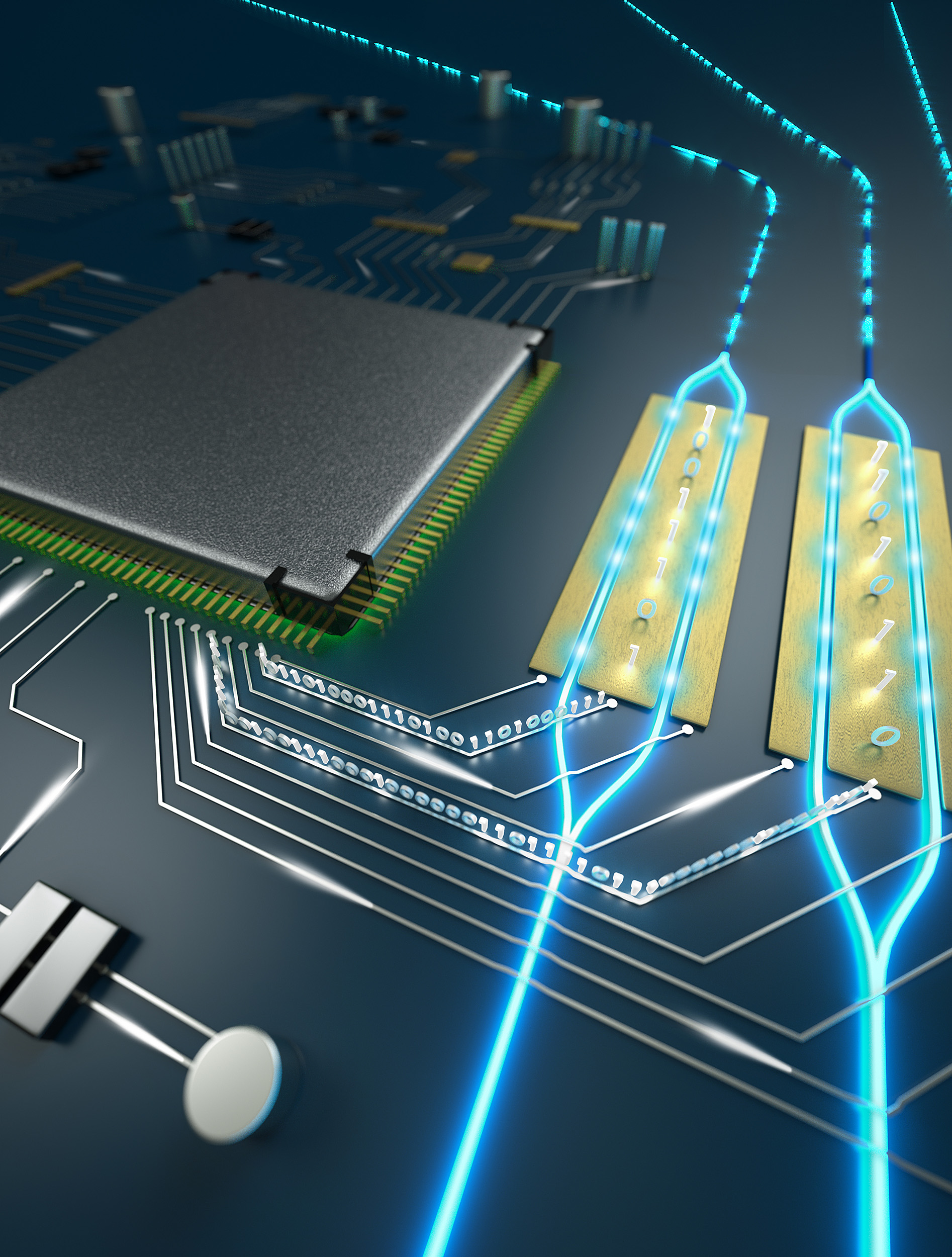
“Building a vibrant community and ecosystem is essential for bringing the benefits of quantum research to different fields of science and society,” said Mikhail Lukin, George Vasmer Leverett Professor of Physics and co-director of HQI. “Quantum at Harvard aims to integrate unique strengths of university research groups, government labs, established companies, and startups to not only advance foundational quantum science and engineering but also to build and to enable broad access to practical quantum systems.”
To facilitate those collaborations, the University is finalizing plans for the comprehensive renovation of an existing campus building into a new quantum hub — a shared resource for the quantum community with instructional and research labs, seminar and workshop spaces, meeting spaces for students and faculty, and space for visiting researchers and collaborators. The quantum headquarters will integrate the educational, research, and translational aspects of the diverse field of quantum science and engineering in an architecturally cohesive way.
This critical element of Harvard’s quantum strategy was made possible by a generous gift from Stacey L. and David E. Goel ’93 and gifts from several other alumni who stepped forward to support HQI. David Goel, co-founder and managing general partner of Waltham, Mass.-based Matrix Capital Management Co. and one of Harvard’s most ardent supporters, said his gift was inspired both by recognizing Harvard’s “intellectual dynamism and leadership in quantum” and a sense of the utmost urgency to pursue opportunities in this field. “Our existing technologies are reaching the limit of their capacity and cannot drive the innovation we need for the future, specifically in areas like semiconductors, technology, and the life sciences. Quantum is an enabler, providing a multiplier effect on a logarithmic scale. It is a catalyst that drives the kinds of scientific revolutions and epoch-making paradigm shifts.”
Electrodes stretch diamond strings to increase the frequency of atomic vibrations to which an electron is sensitive, just like tightening a guitar string increases the frequency or pitch of the string. The tension quiets a qubit’s environment and improves memory from tens to several hundred nanoseconds, enough time to do many operations on a quantum chip.
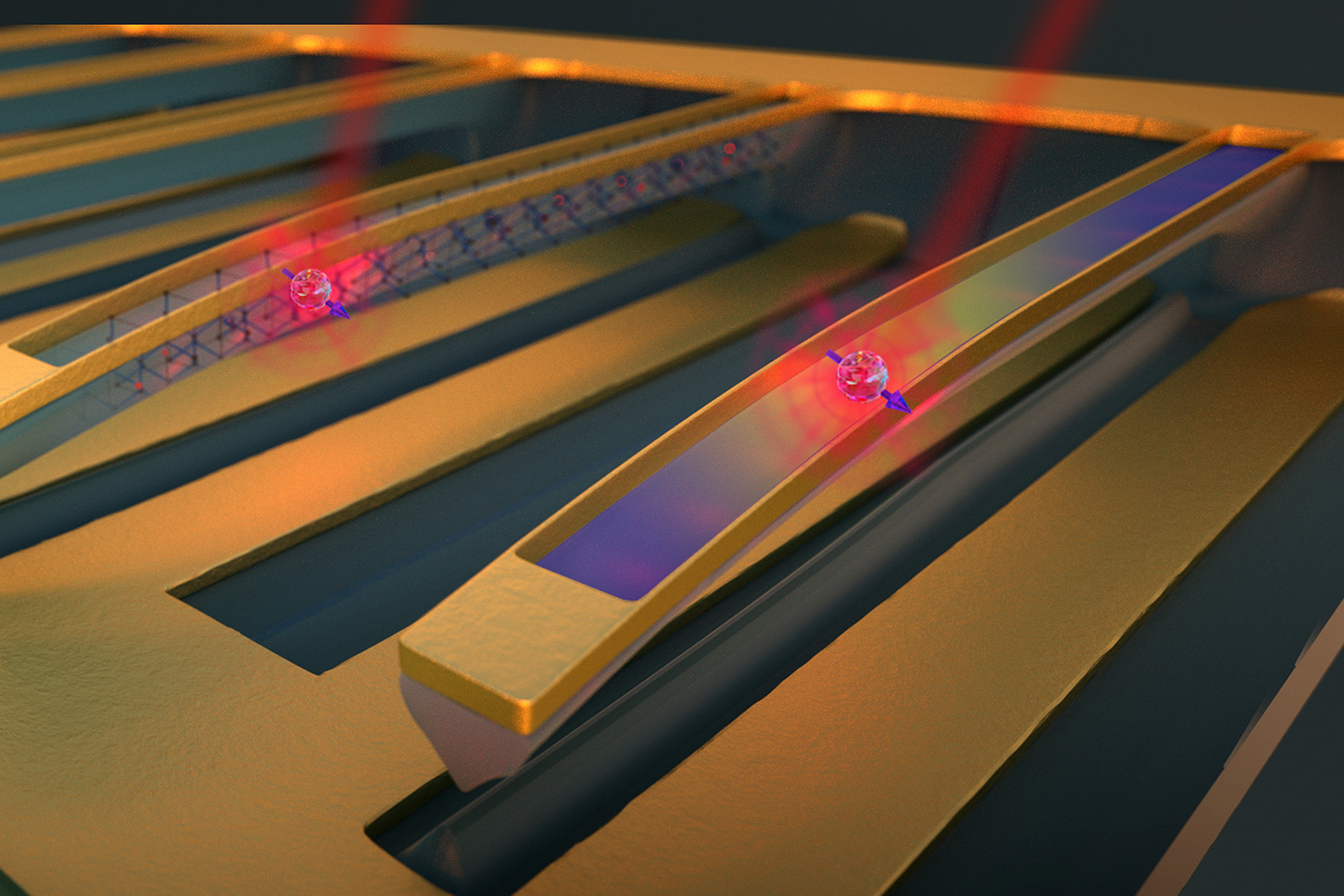
Goel credits the academic leaders and their “commitment to ensuring that Harvard’s community will be at the forefront of the science that is already changing the world.”
The University is also building partnerships with industry partners, ranging from startups to major national corporations, that are preparing to bring quantum technologies to the public.
“An incredible foundation has been laid in quantum at Harvard, and we are now at an inflection point to accelerate that activity and build on the momentum that has already made Harvard a leader in the field,” said Frank Doyle, SEAS dean and John A. and Elizabeth S. Armstrong Professor of Engineering and Applied Sciences. “Research happening right now in Harvard labs is significantly advancing our understanding of quantum science and engineering and positioning us to make breathtaking new discoveries and industry-leading translation breakthroughs.”
To enable opportunities to move from basic to applied research to translating ideas into products, Doyle described a vision for “integrated partnerships where we invite partners from the private sector to be embedded on the campus to learn from the researchers in our labs and where our faculty connect to the private sector and national labs to learn about the cutting-edge applications, as well as help translate of basic research into useful tools for society.”
“We are at the early stages of a technological transformation, similar or maybe even grander than the excitement and the promise that came with the birth of computer science — and Harvard is at the forefront,” Stubbs said.



